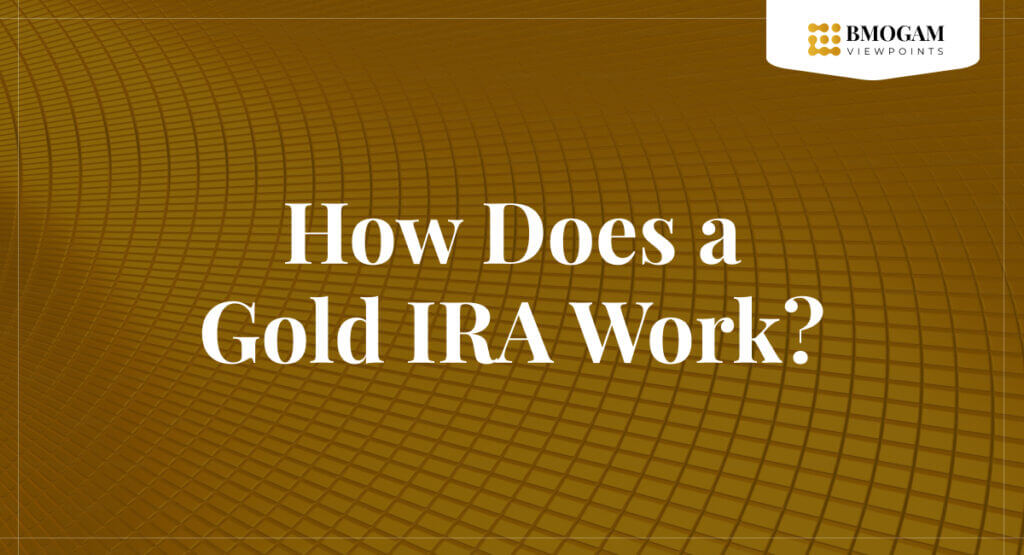Disclaimer: We are reader supported. We may be compensated from the links in this post, if you use products or services based on our expert recommendations. Please read our Advertising Disclosure.
Although Northwestern Mutual has been a stalwart in the insurance industry for over 150 years, its name remains unfamiliar to many. As one of the largest life insurance companies in the U.S., it reported over $10 billion in premiums in 2015.
According to the National Association of Insurance Commissioners (NAIC), Northwestern Mutual ranks as the second largest insurance company worldwide, commanding 6.36 percent of the market share.
From its humble beginnings, Northwestern Mutual has expanded to serve millions of customers.
However, a pressing question for many investors is whether Northwestern Mutual offers IRAs that can hold physical gold and other precious metals.
Read on to discover the answer.
Before we get started:
We understand how difficult it is to pick a company that you can trust with your hard earned savings. That's why we create informative and useful information to give you as much knowledge as possible to make the right decision.

We created a list of our highest recommended investment companies, to make comparing and choosing the company best suited to your needs as easy as possible.
Look to see if Northwestern Mutual was selected to our "highest recommendation" list this year!
Or...
Get a FREE Gold Investing Packet from our #1 recommendation:
Protect Your Savings - Tax and Penalty Free!
About Northwestern Mutual

This company might be better known for its services in financial planning rather than as a life insurance provider because it advertises itself as such.
It promotes an all-inclusive approach to financial planning that looks at the entire picture of the individual's worth including investments and insurance. One aspect protects it, and the other aspect grows it.
Recently, Northwestern Mutual has entered the world of precious metals, as more and more investors are seeking to protect their wealth with physical gold and silver.
Unfortunately, Northwestern Mutual does not offer IRAs that can hold physical gold investments.
Instead, Northwestern Mutual offers financial instruments such as gold-related certificates. These instruments are designed for short-term investment and not for retirement funds.
If you are looking to protect your retirement savings with a gold IRA, don't worry, there are much better options to choose than Northwestern Mutual.
You can read our list of the very best companies to work with by clicking here.
Why Put Gold in Your IRA?
Individual Retirement Accounts (IRA) protect your retirement as well as your family's financial security.
These special accounts allow you to set aside tax protected savings that you can use in the future.
With these long term accounts it's important to allocate a significant portion to assets that are solid and reliable, so you have a secure and worry-free retirement.

You can have cash in an IRA, but that is devaluing at a rapid pace and inflation is out of control.
You need an asset that's dependable, retains it's value, and even increases in value over time, and there is no better asset for this than gold.
With the world's economy struggling through lockdowns, shortages, wars, and inflation, uncertainty has never been higher and investors are protecting themselves by placing physical gold in IRA's.
A gold IRA investment prospers from these crisis that negatively affect most other assets.
Risk is knowing the economic dangers and doing nothing to protect yourself and your family.
Safety is knowing the economic dangers and taking action to protect your financial future, and this is easy to do with a gold IRA.
What is a Gold IRA?
A gold IRA, or a precious metals IRA, is an IRA that lets you invest in physical precious metals for retirement. Although they are referred to as "gold" IRAs, you can invest in other precious metals including silver, palladium, and platinum in these accounts.
There are two general types of IRAs. One is traditional, and the other is Roth. Both offer tax benefits in different ways.
Contributions are made from your pre-tax dollars. The money in the IRA grows with taxes deferred. When you withdraw during your retirement, the amount withdrawn is taxed at the regular income tax rate.
Withdrawals made before you reach 59 1/2-year-old are subject to a tax penalty of 10%, but there are a few exceptions to that. When you reach age 72, you must start to take an RMD or a required minimum distribution.
In a Roth IRA contributions are made with post-tax dollars. The money in the IRA grows free of tax. When you withdraw any gains during your retirement, they are tax-free as well.
There is also a penalty if you withdraw gains before you reach 59 1/2 years old, but there are no RMDs.
Your contributions can be withdrawn at any time without any penalty because you already paid taxes on the funds before you invested them in your Roth IRA.
By 2022, employed people who are younger than 50 years old can put up to $6,000 into an IRA. Workers who are older than 50 can contribute up to $7,000 for the tax year.
Other IRS rules dictate who is eligible to contribute to an IRA, such as rules based on income limits.
The IRS considers precious metals such as gold to be non-traditional investments. So, they can only be kept in self-directed IRAs. There are rules around what types of precious metals are eligible for IRAs and how the physical metal should be stored.
How do Gold IRAs Work?
The process of setting up a gold IRA is fairly straightforward. After you open the gold IRA, you provide the new account number to the custodian of your old retirement account.
They will start the process of a fund transfer directly into your gold IRA account. This transfer might take a few days or a few weeks depending on the institution and the kind of retirement account you have.
Sometimes there are tax implications with transferring funds between retirement accounts. Therefore, if you have any questions, you should consult with a tax expert.
What Exactly is a Gold IRA Rollover?
After you decide to invest in gold for your IRA, the next step is to figure out the best way to proceed. The easiest way is to do a rollover of your current 401(k) or IRA.
401(k) plans from employers often charge high maintenance fees, and they have limited options for investments. You should not expect to see any options for investing in precious metals in your 401(k) plan.
That means you should find another IRA or 401(k) that has lower management fees and more investment options that would include direct investment in gold. A 401(k) or IRA rollover is relatively simple.
You just transfer funds from your old account to a new plan of your choice. Just keep in mind that the IRS requires the fund transfer to complete in less than 60 days.
If the funds are not transferred within that time, the IRS will see this as a withdrawal, and the funds will be subject to a tax penalty. If you bought gold through a gold IRA or gold 401(k), you will enjoy the same tax benefits that are available to traditional IRAs.
Converting Your 401(k) to a Gold IRA
In a rollover, you can choose the type of retirement account that you want to roll over to. Your choices include a traditional IRA, a traditional 401(k), or a Roth IRA.
With the traditional accounts, the funds are not subject to any taxes if the transfer completes within 60 days.
For a rollover of a Roth IRA, the funds you transfer are subject to taxes, just like how the rest of your Roth IRA contributions are made from post-tax dollars. With Roth IRAs, remember that gains and withdrawals will be tax-free.
You can own multiple 401(k)s and IRAs simultaneously. So, you can open self-directed IRAs as well as solo 401(k)s at the same time. Note that you can make a higher annual contribution to a solo 401(k) for precious metals.
You can open your new account with a bank, a broker on the web, or through a Robo-advisor. If you want the ability to control your investments directly, then using an online broker would fit your needs.
Fees and commissions do vary from broker to broker. Therefore, look for a broker with expertise in gold investing and who charges reasonable fees.
There is usually some paperwork that you have to complete to initiate the rollover. After you submit the forms, your current plan administrator will transfer your funds to your new retirement account with a check or a wire transfer.
Once you initiate the transfer, the 60-day clock starts ticking. You must monitor the progress of the transfer at this point because your funds must appear in your new gold 401(k) or gold IRA account within 60 days.
If not, the current provider may withhold as much as 20% of the transfer amount as a tax payment. They have no incentive to speed up the transfer. So, you must watch the transfer closely to prevent them from dragging their feet.
Make sure you clarify that you want a direct rollover and not an indirect one. In an indirect rollover, the provider will send the funds to your bank account. Then, you will need to transfer the money from your bank to the new IRA.
This takes more time and more steps to complete. If you are comparing the two, a direct rollover would be more efficient.
After your funds appear in your gold IRA account, your next step would be to choose what kind of gold investment to get. You can choose from gold coins or gold bars.
Only certain types of gold coins that the IRS approved are eligible for a gold IRA account. You also need to comply with the IRS rules regarding how your gold assets should be stored.
Avoiding Penalties when Moving a 401(k) to Gold
As mentioned, the fund transfer must complete within 60 days, or else the funds will be subject to a tax penalty. An early withdrawal made before you reach 59 years old will also trigger a tax bill plus a 10% penalty on top of that.
If your state charges tax too, you can expect to pay a tax and penalty bill that could be as high as 45% of your funds.
All that can be avoided if you complete the transfer within 60 days. If it is an indirect rollover, you can avoid penalties only if you are 59 years old or older and if your new 401(k) or IRA account is a tax-deferred account.
How Much Gold Should You Invest In?
The amount of gold you should buy depends on your financial situation. You can start with 10% of your retirement portfolio. During inflationary times, the value of this amount can be raised to 50%. That is entirely up to you.
Benefits of a Gold IRA
The value of gold and the value of the dollar go in opposite directions. When the value of the dollar falls during inflation, the value of gold rises. Any gold investment will increase in value even when the value of your paper investments declines.
American investors are aware that diversification in their investment portfolios is important. A gold IRA is an excellent way to diversify your holdings.
It can balance the negative effects that an economic crisis can have on your other investments because, as you recall, when the dollar becomes weaker, gold prices go up.
You get full control in your gold IRA, unlike a regular IRA or a 401(k) which are managed by the fund provider. Therefore, the ideal approach is to roll over your 401(k) to a gold IRA, then find a custodian who can oversee the assets for you.
The gold IRA and the 401K have similar tax benefits. Funds grow tax-deferred unless you make an early withdrawal. A Gold IRA lets you pay taxes on the gains at a later time so you get tax benefits now.
Northwestern Mutual Investment Services

Northwestern Mutual Investment Services does not manage portfolios actively nor run investment funds. It provides advisory services and does not have any trading authority.
They provide investment advice, and if the client chooses to follow their advisor's recommendations, the agent from Northwestern will take the role of a broker-dealer and execute their trade to set up the investment.
If the company is unable to meet the client's needs, they will refer the client to another firm for a referral fee. The company also offers an advisory service for other financial professionals.
Here is a summary of services offered in their role as an investment advisor:
In addition to its advisory services, Northwestern Mutual serves as a broker-dealer for investors, sells insurance, and supports business owners.
Conclusion
If you have a sizable retirement portfolio and you want to take it to the next level, you can consider using an investment advisor who is registered for this specialty.
This kind of investment company might focus on beating the market in terms of returns.
The advisors might also be able to make trades on your behalf, instead of just advising how Northwestern Mutual Wealth Management operates its business.
Northwestern Mutual is not a good option if you are looking for a gold IRA, but don't worry, there are a few companies out there that specialize in these retirement investments that we recommend.
Or
>> CLICK HERE to read our list of the Best Gold IRA Companies. <<
Or, if you like what you have read about Northwestern Mutual, you can go to there website below:

I started BMOGAM Viewpoints as a way to compile all my views on investing in one place. I own my home, have some real estate, and own a few stocks like most people, but what really drives my interest in investing is I have a strong love of precious metals, especially gold.



